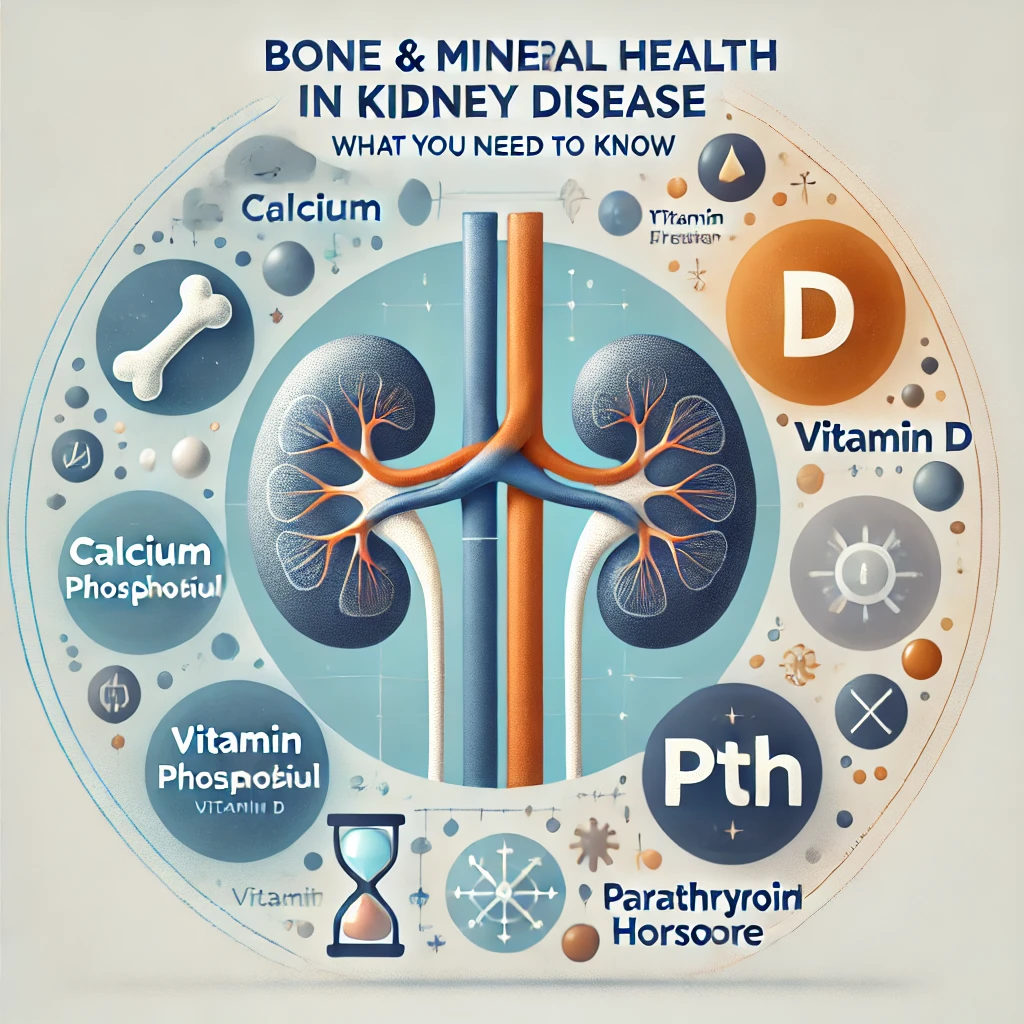If you or a loved one has kidney disease, you might have heard the term “CKD-MBD” from your care team. While it sounds complicated, this condition is manageable with the right knowledge. Let’s break down what CKD-MBD means, why it matters, and how you can protect your bones and heart—based on trusted guidelines from kidney experts (KDIGO).
What Is CKD-MBD?
CKD-MBD stands for Chronic Kidney Disease-Mineral and Bone Disorder. In simple terms, it’s a condition where kidney disease disrupts the balance of minerals like calcium and phosphorus in your body. Over time, this imbalance can:
- Weaken your bones (raising the risk of fractures).
- Harm your blood vessels (increasing heart disease risk).
Your kidneys usually help regulate these minerals and activate vitamin D for bone health. When kidneys aren’t working well, this system gets thrown off track.
4 Key Steps to Manage CKD-MBD (Based on Expert Guidelines)
1. Keep an Eye on Your Lab Results
Your care team will check your blood regularly for three key numbers:
- Phosphorus: High levels can make bones brittle and damage blood vessels.
- Calcium: Too much or too little can cause problems.
- PTH (a hormone): High PTH means your bones are being “stripped” of calcium.
What you can do:
– Ask your doctor what your target levels are.
– Attend regular blood tests—they’re your early warning system!
2. Tame High Phosphorus
Phosphorus is found in many foods, and damaged kidneys can’t remove excess phosphorus from your blood.
- Choose low-phosphorus foods: Limit processed meats, sodas, and dairy. Opt for fresh fruits, veggies, and whole grains (ask your dietitian for a personalized plan).
- Take phosphate binders: These medications (like Tums® or Renvela®) act like sponges, soaking up phosphorus from your food so it doesn’t enter your blood.
3. Protect Your Bones
- Vitamin D: Many kidney patients need special vitamin D supplements (like calcitriol) since kidneys can’t activate regular vitamin D.
- Exercise: Walking, light weights, or yoga can strengthen bones. Even 20 minutes a day helps!
- Avoid smoking and excess alcohol: Both speed up bone loss.
4. Guard Your Heart
- Stick to your kidney-friendly diet: This helps control phosphorus.
- Ask about non-calcium binders: If you have heart issues, medications like sevelamer (Renvela®) may be safer than calcium-based binders.
FAQ: Common Questions About CKD-MBD
Q: Can I take regular calcium supplements?
A: Not without talking to your doctor! Too much calcium can harm your heart in kidney disease. Your care team will guide you.
Q: What if my bones already hurt?
A: Tell your doctor. They might check for fractures or adjust your medications.
Q: Can kids get CKD-MBD?
A: Yes—children with kidney disease need special care to protect their growing bones.
References
Guidance in this post is based on the 2017 KDIGO CKD-MBD Guidelines, created by global kidney experts. Learn more here:
